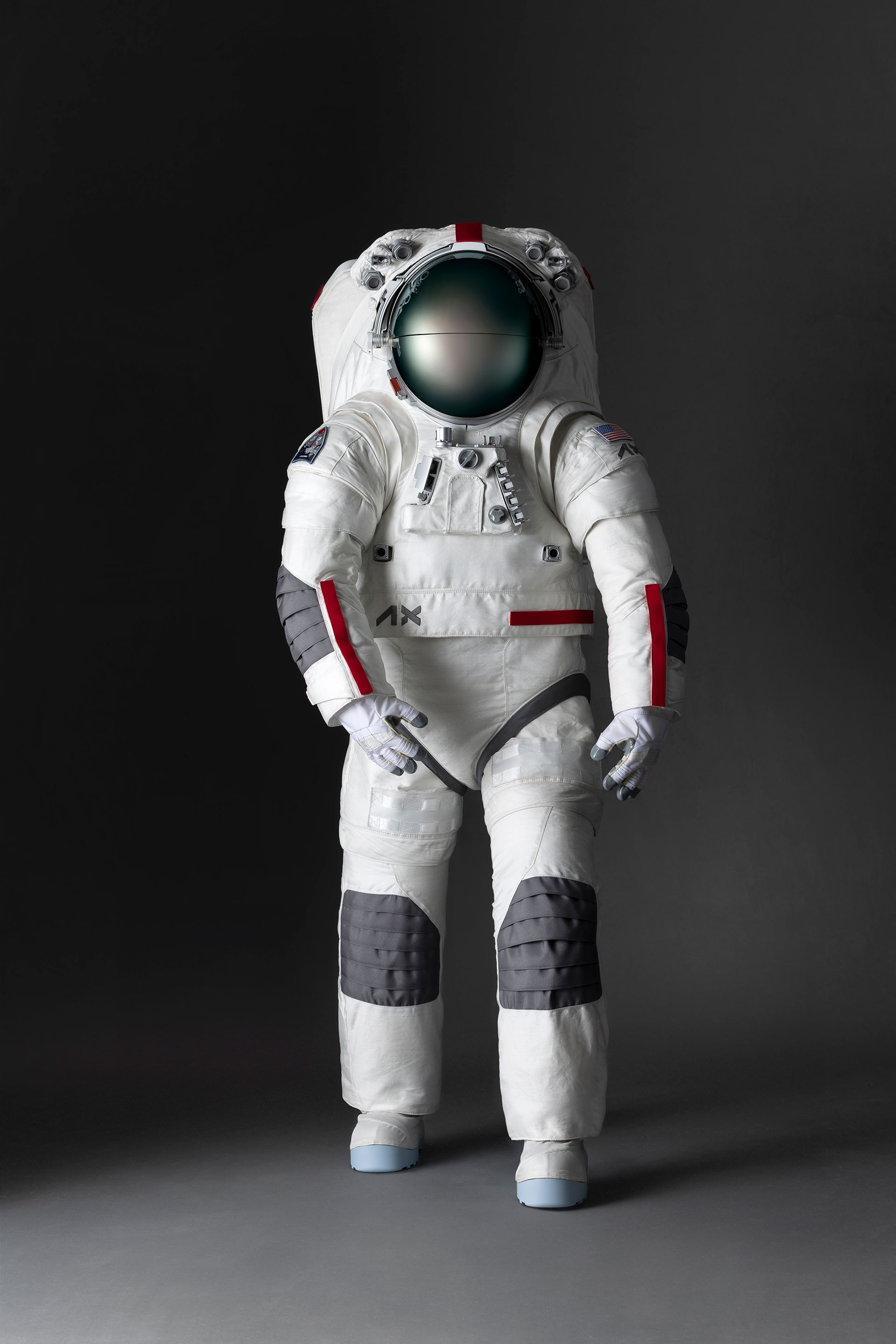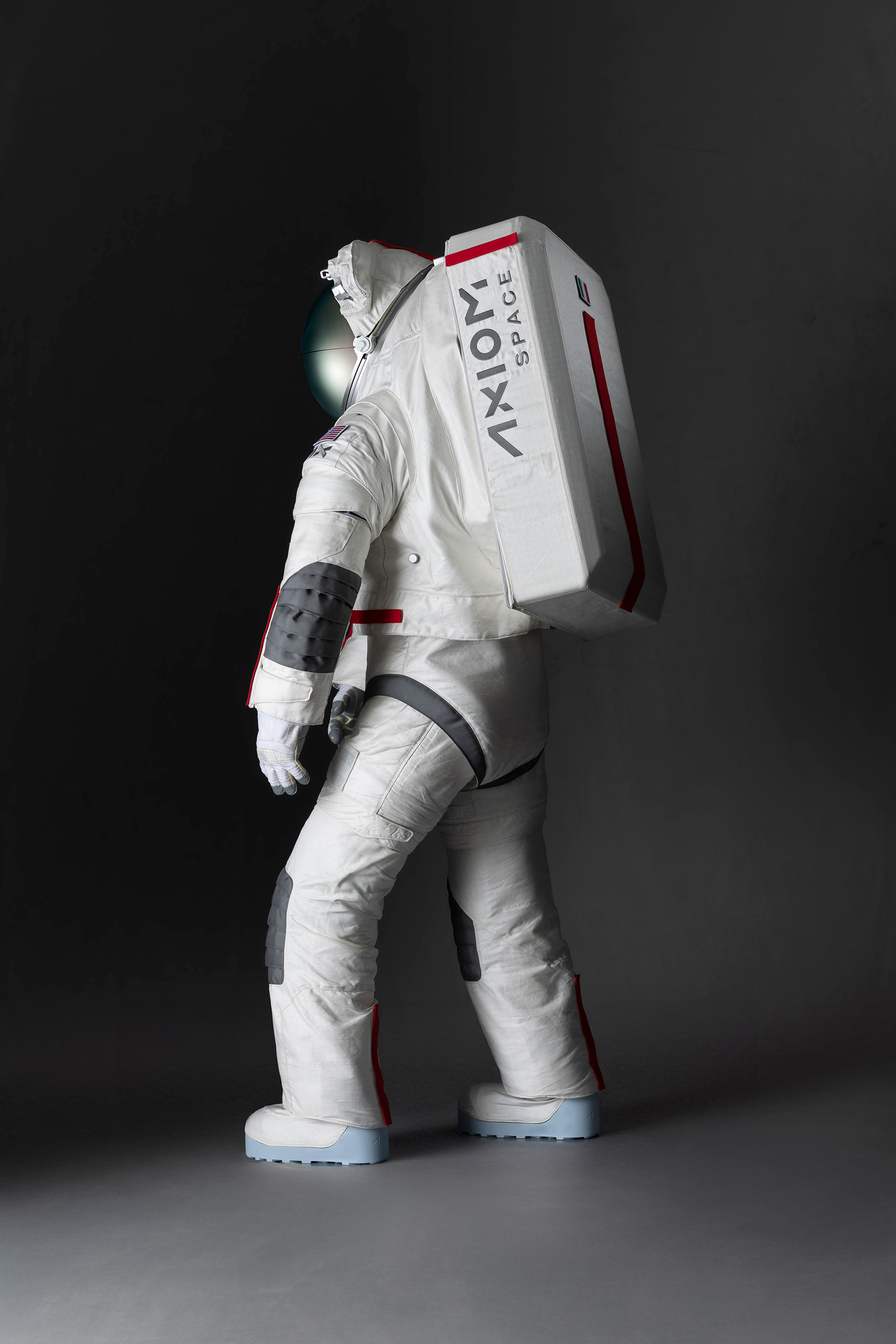Artemis moon suit designed by Axiom Space and Prada revealed in Milan (photos)
'We have broken the mold.'

The next U.S. astronauts to walk on the moon will do so in style.
Axiom Space, a Houston-based spaceflight services company, and Italian luxury fashion house Prada have revealed the outer layer of the spacesuit to be worn on NASA's first Artemis mission to land humans on the lunar surface. The unveiling occurred at the International Astronautical Congress in Milan.
"We have broken the mold," said Matt Ondler, Axiom's president, in a statement issued on Wednesday (Oct. 16). "The Axiom Space-Prada partnership has set a new foundational model for cross-industry collaboration."

Since first showing off a prototype of the Axiom Extravehicular Mobility Unit, or AxEMU, in 2023, Axiom has configured the spacesuit with a dark outer layer created by Esther Marquis, the costume designer for the alternate space history series "For All Mankind." The temporary black, blue and orange cover was intended to hide the garment's proprietary elements during its development.
Related: Axiom Space reveals prototype spacesuit for Artemis astronauts on the moon
The final, flight version of the suit features a mostly white exterior for the same reasons most other spacesuits are light in color: to reflect heat, protecting its wearer from the high temperatures encountered when in direct sunlight. The white material also helps mitigate lunar dust by making it easier to see on the fabric.
"I'm very proud of the result we're showing today," said Lorenzo Bertelli, Prada Group chief marketing officer and head of corporate social responsibility. "We've shared our expertise on high-performance materials, features and sewing techniques, and we learned a lot."
The spacesuit has dark gray pads on the elbows and knees, as well as similarly colored hip joints. The boots feature a light blue sole, similar in hue to the Apollo-era overshoes last used on the moon more than 50 years ago, and there are attach points for red stripes as were added to Apollo, space shuttle and space station suits to help distinguish between crew members.
The upper torso assembly, with its integrated helmet and portable life support system (PLSS) backpack, also has attach points for embroidered national flags and a mission patch (or as shown on Wednesday, Axiom Space's AxEMU emblem). Emphasizing this is a commercial design, Axiom's "AX" logo is also sewn in gray on the suit's mid-body flap.

NASA awarded Axiom Space a $228 million task order in 2022 to provide the suits for the Artemis 3 mission, which is expected to launch no earlier than late 2026.
"We are pioneering a new era in space exploration where partnerships are imperative to the commercialization of space," said Russell Ralston, executive vice president of extravehicular activity at Axiom Space, referring to the work the company has done with Prada. "For the first time, we are leveraging expertise in other industries to craft a better solution for space."
The AxEMU suit passed its preliminary design review and will enter the critical design review phase in 2025. According to Axiom, the suit has been designed to support moonwalks lasting at least eight hours and has been tailored to meet the needs of NASA's chosen landing region on the moon. The AxEMU has been designed to withstand the extremes at the lunar south pole and endure the coldest temperatures in the permanently shadowed regions for at least two hours.
The suit features an onboard diagnostic system, a regenerable carbon dioxide scrubbing system and cooling technology to remove heat. It includes coatings on the helmet and visor to enhance the wearer's view and improved gloves over the gauntlets worn previously on the moon and in space.
The AxEMU has undergone testing and simulations with a variety of astronauts and engineers at in-house, SpaceX and NASA facilities. The suit has been put through unoccupied trials underwater at NASA's Neutral Buoyancy Laboratory (NBL) and has gone through reduced-gravity simulations at the Johnson Space Center in Houston.
Further testing, including crewed runs in the NBL and integrated trials with the prototypes for the Artemis Lunar Terrain Vehicle (or moon rovers), will continue as the AxEMU enters its final development stage over the next year.
Follow collectSPACE.com on Facebook and on X at @collectSPACE. Copyright 2024 collectSPACE.com. All rights reserved.
Get the Space.com Newsletter
Breaking space news, the latest updates on rocket launches, skywatching events and more!
Join our Space Forums to keep talking space on the latest missions, night sky and more! And if you have a news tip, correction or comment, let us know at: community@space.com.

Robert Pearlman is a space historian, journalist and the founder and editor of collectSPACE.com, a daily news publication and community devoted to space history with a particular focus on how and where space exploration intersects with pop culture. Pearlman is also a contributing writer for Space.com and co-author of "Space Stations: The Art, Science, and Reality of Working in Space” published by Smithsonian Books in 2018.In 2009, he was inducted into the U.S. Space Camp Hall of Fame in Huntsville, Alabama. In 2021, he was honored by the American Astronautical Society with the Ordway Award for Sustained Excellence in Spaceflight History. In 2023, the National Space Club Florida Committee recognized Pearlman with the Kolcum News and Communications Award for excellence in telling the space story along the Space Coast and throughout the world.










